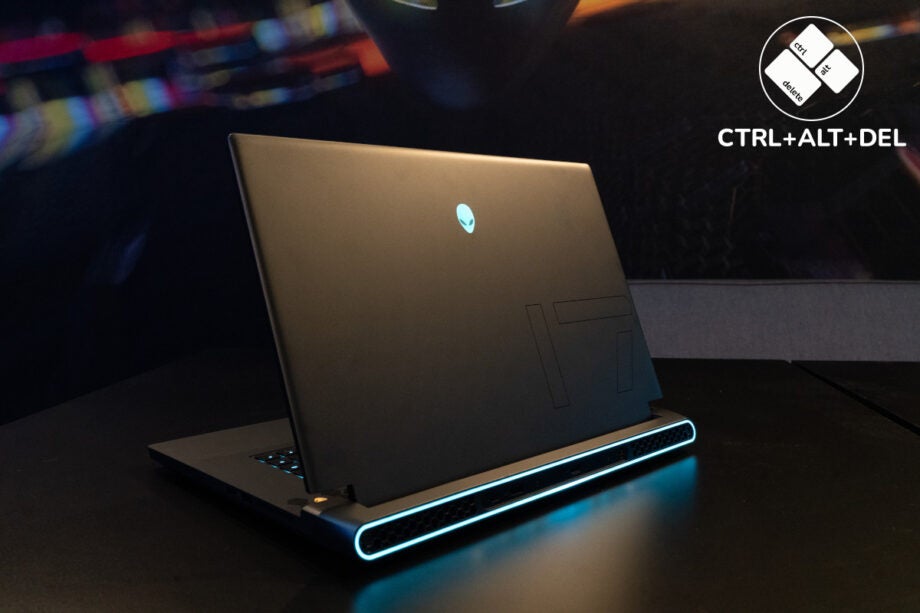Ctrl+Alt+Delete: Alienware using Ryzen starts a cataclysmic shift for PC gaming

OPINION: This week Alienware released the first gaming laptops and desktops using AMD, rather than Intel, CPUs in the last 10 years.
This may not be big news to most people, but for me it’s by far one of the most important developments in the world of PC gaming for quite some time.
To be clear this isn’t because I think the new AMD Ryzen powered Alienware Aurora R14 Ryzen Edition desktop and Alienware m15 R7 and Alienware m17 R5 laptops are the best bits of tech I’ve ever seen. We haven’t actually had them in for review yet so it’s way too early to make a call on that. They’re also not exactly “new” – Alienware first unveiled them in April 2021.
The reason I think they’re big news and an important development stems from how they’re linked to a wider cataclysmic shift that’s occurring in PC gaming.
PC gaming for the most part has been a fairly static market up until recently. If you look at our old recommendations and reviews you’ll see there was a status-quo about what we’d recommend to any budding gaming PC builder, or buyer on the hunt for a gaming laptop.
Specifically, we’d nearly always recommend buyers who could afford it invest in an Intel CPU and Nvidia GPU. We’d then generally tell people on a very strict budget to consider AMD as an alternative.
This was because, as we noted in pretty much every CPU review, Intel’s higher clock speeds and more reliable laptop chip thermals generally let them play games at noticeably higher frame rates than their AMD Ryzen rivals. We only flipped to recommending AMD when it came to creative workloads, like video editing, 3D Modelling and Vector graphics due to their superior multi-core performance.
The same was true when it came to GPUs. If you look at our best GPU guide you’ll notice a similar trend. Nvidia’s GPUs tend to run games at higher frame rates and deal with demanding graphical technologies, such as ray tracing much better than their AMD rivals. This isn’t surprising as Nvidia’s had more time to optimise its cards for things like ray tracing, having been the company to bring the tech to the market with its RTX 20-series cards in 2018. AMD meanwhile only caught up with the launch of its RDNA2 architecture RX 6000-series cards in 2020, a full two years later.
However, over the last couple of years this status quo has been shaken. AMD Ryzen’s moved from making waves in the creative market to becoming an increasingly common sight on gaming laptops and desktops. Alienware, being one of the most known PC gaming brands on the market, is the latest proof of this. And on top of that, there’s a good reason why. Take a look at our Ryzen 7 5800X review from last year and you’ll see, AMD is slowly, but steadily closing the gap on its Intel rivals, with there being negligible differences in framerates between the two during our tests.
You’ll see a similar story if you check out our Lenovo Legion 5 (2021) review, where our tests revealed AMD’s laptop chip to have significantly improved thermals and power efficiency on the firm’s previous efforts, which tended to run a little hot for our liking. The same was true when we tested the AMD-powered Steam Deck – which is an ultra-compact Windows-power Nintendo Switch rival designed by Valve.
More and more we find ourselves recommending AMD devices at least on a par with Intel’s as a result.
The shift isn’t limited to the world of CPUs either. Intel’s making its own innovative moves into Nvidia’s territory, with its new ARC graphics cards. Specifically, on March 30 it unveiled its first wave of A-series laptop dGPUs. It’s also expected to unveil its fabled first desktop Alchemist GPU this year.
We haven’t reviewed any of the cards, but the specs sheets for a first stab at the market are impressive. As well as ray tracing Intel’s also confirmed all three will support its new Xe Super Sampling (aka XeSS) tech. This is a rival to AMD’s FSR and Nvidia’s DLSS that aims to use tech wizardry to help the cards run demanding processes, like ray tracing, at higher framerates.
Whether or not the cards match their more established rivals, the fact XeSS will work at launch is a step up on AMD that had to retroactively add FSR support nearly a year after it released its first RX 6000 cards. The very fact Intel’s entering the market is also great for consumers in my mind.
It’s no secret the status quo hasn’t been great for gamers. Until Ryzen came along Intel was content doing modest updates to its CPUs’ clock speeds year-on-year that didn’t justify the immense price hikes it kept adding. To this day it’s still partially guilty of this with the Intel Core i9-10900K proving to be a hot mess in the worst possible way when we reviewed it two years ago. But the firm has since put a much bigger focus on fixing the issue with its 12th gen chips, which focus on multi-core and multi-thread performance in a much bigger way than any previous Intel chipset.
Competition always drives innovation in the technology market. So in mind Intel entering the graphics market and repeating the same cataclysmic shift to the status quo AMD achieved in CPUs, as demonstrated by the latest Alienware release, can only be a good thing for consumers.








